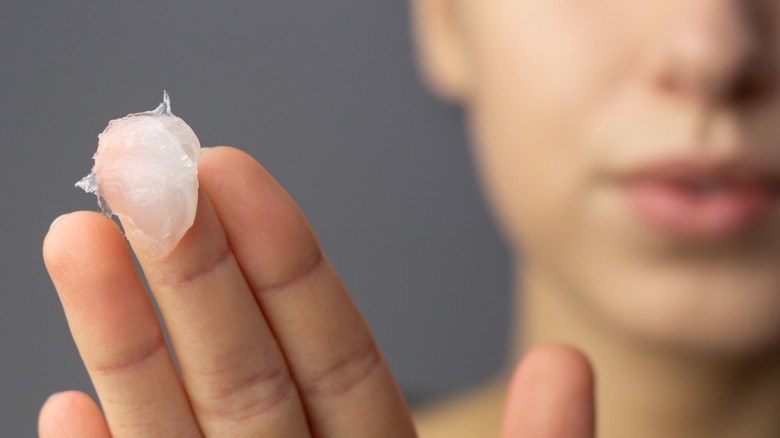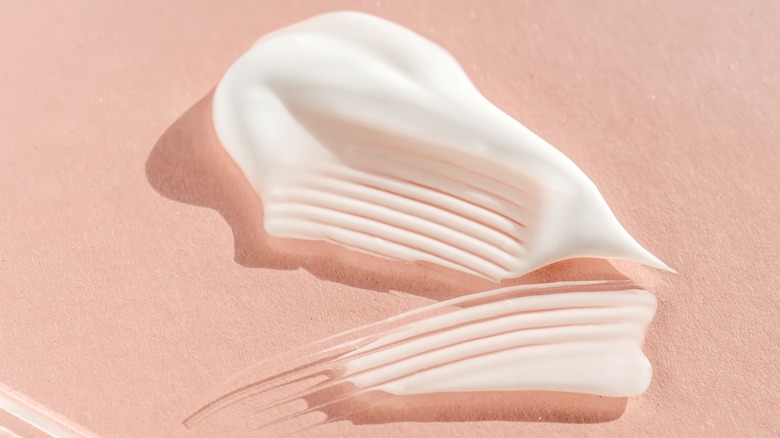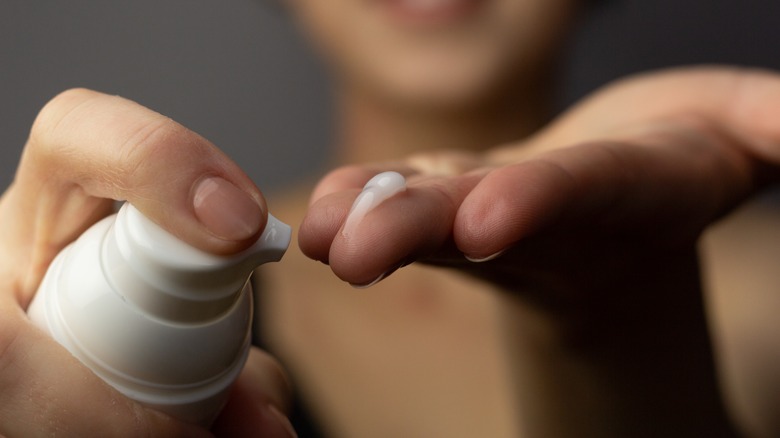Can You Slug Your Face While Using A Retinol Product?
We may receive a commission on purchases made from links.
Using retinol in your skincare is one of the best ways to prevent both acne and the signs of aging, such as fine lines and wrinkles. Retinol belongs to a class of topical ingredients known as retinoids, and Harvard Medical School claims that researchers have documented the impressive effects of retinoids since the 1970s. Ask any skincare expert which products they swear by for proven results, and you'll find that retinol is likely to be high on the list.
But what if there were a way to increase the beneficial properties of retinol? It might sound too good to be true, but that's where slugging comes in. K-beauty enthusiasts are sure to be familiar with snail mucin and how it can help your skin. After all, it's a perennial skincare ingredient that inspired slugging's name. However, slugging simply refers to a practice involving heavy-handed application of moisturizers or creams to lock in hydration (via MarthaStewart.com). Social media skinfluencers and dermatologists alike have touted slugging for its moisturizing and healing qualities.
Clearly, retinol usage and slugging can be powerful additions to your skincare routine on their own, but experts have also weighed in on whether you should use these two together.
The advantages of using retinol products
Retinol is an over-the-counter retinoid that addresses a variety of skin concerns simultaneously, and numerous studies support its efficacy, according to research published in Clinical Interventions in Aging. Derived from vitamin A, retinol helps your skin look its best by increasing cell turnover rate and collagen production. Because of its regenerative properties, retinol can help to heal acne, hyperpigmentation, and smooth fine lines. As esthetician Renée Rouleau explained to Byrdie, "Using a well-formulated and stable product with retinol will visibly reduce the appearance of sun damage, brown spots, lines, wrinkles, and large pores."
Before taking the leap with retinol, there are a few things to take into account. The best time to incorporate retinol is in the evening, as sunlight can hinder its effectiveness. And according to dermatologist Dr. Shari Marchbein, "dryness and peeling when first using retinoids can make you more sensitive to the sun, so it is best to use them at night" (via InStyle). Although retinol can cause "purging" or breakouts upon initial use, it's generally considered safe for all skin types.
Those who are pregnant or breastfeeding should not use retinol due to potential side effects. If you receive facial waxing treatments, avoid retinol products leading up to your appointment date, as waxing can cause painful skin irritation on retinol-treated skin. "If you are just starting a retinoid or retinol, I recommend avoiding waxing for the first two weeks as the skin acclimates," explains Dr. Dendy Engelman (via Elle).
What to expect from slugging
Slugging is an evening ritual beloved for its ability to soothe dry skin, and many believe it can improve the absorption of topical treatments. The slugging technique is practiced by cleansing your skin, applying nighttime products such as serums or creams, and following with a light layer of Vaseline or another similar ointment. Proponents of the routine have reported improved texture, softness, and hydration in their skin after consistent slugging (via Versed).
While slugging can work wonders for dry skin, it may not yield the same results in those with oily or acne-prone complexions. Experts caution those with blemish-prone skin about using occlusive ointments like Vaseline when slugging, as they can increase breakouts and interact negatively with products. On this, Dr. Marchbein told Teen Vogue, "If you're acne-prone but want a similar effect, I would use a creamy moisturizer instead of petrolatum." For those who'd like to try slugging without the commitment, you can experiment by short-contact slugging — that is, slugging at home for a couple of hours versus overnight.
Incorporating retinol use with slugging
The verdict on whether to use retinol products with slugging is mixed, as skin type plays a role in the answer. Despite their benefits, it's important to note that retinol products and slugging have drawbacks when addressing certain skin conditions. And while your skin may respond well to retinol or slugging as individual treatments, it doesn't mean it will love them together or combined with additional products. In fact, Dr. Elyse Love told InStyle, "I recommend a test spot before slugging the entire face for acne-prone skin. For the same reason, oil-based products should not be applied underneath petroleum jelly."
Some experts advise against pairing slugging with potent agents such as retinol if you have sensitive skin. Plastic surgeon Dr. Alexis Parcells says, "When trapped, these [actives] can increase their strength beyond what was concentrated by a chemist, leading to unpredictable results on your skin" (via Elle). However, if you've used retinol on a long-term basis and are confident in your skin's tolerance of the ingredient, then it's considered safe to combine with slugging. If you're still on the fence, you can contact your dermatologist for tailored advice on implementing retinol usage and slugging in your skincare routine.



